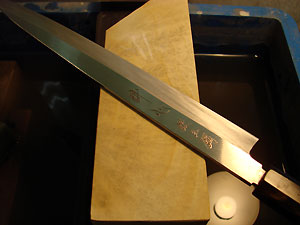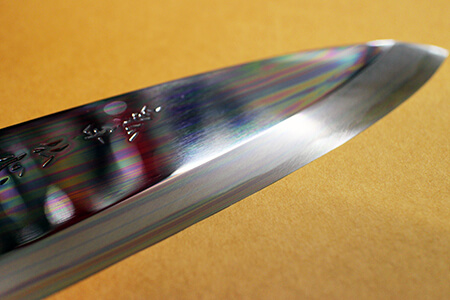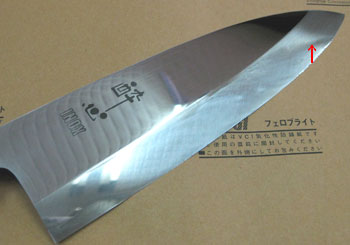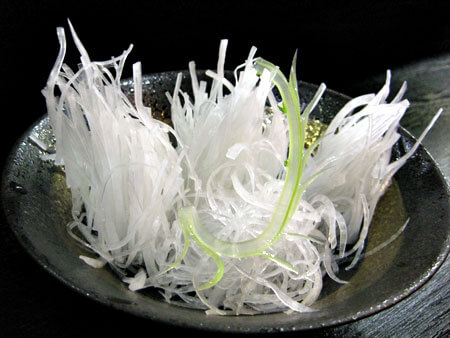Daily Honbazuke
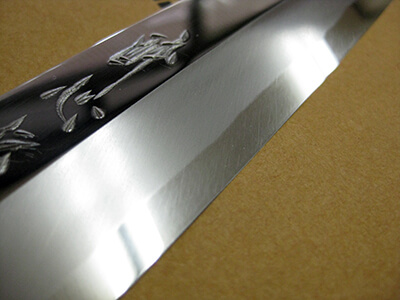
For the past three days, I’ve been honing my skills through daily sharpening sessions. Without any rush, I’m taking a relaxed approach, sharpening the way I feel works best for me. I’ve been trying different techniques, like a smooth and even sharpening style or experimenting with natural whetstones. It’s all about my personal journey of improvement and discovery!
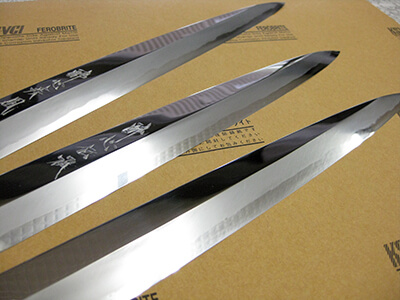
Even though I mentioned honbazuke, I haven’t actually put on the final edge yet… I’ve been playing around a bit with the blade’s structure, tweaking the shinogi line just a tad, and experimenting with how to eliminate slight imperfections along the edge. I’ve even tried changing the sequence of stones I use. Oh, and I intentionally tried using a slightly curved stone too, just to see how far I can push it within acceptable limits (laughs).

It’s a 300mm Hayate Yanagiba knife with an Aike pattern on it. I sharpened it using diamond whetstone, followed by a #400 coarse stone, then a #1000 medium stone, and finally finished it off with a Hideri Suita stone.
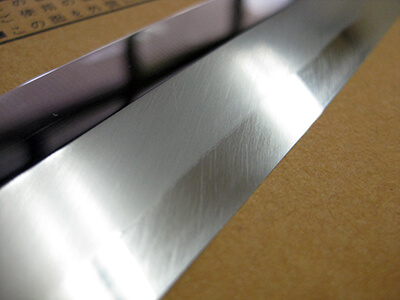
This is a 270mm Hayate Yanagiba knife with an Aike pattern. I used a diamond whetstone, followed by a #400 coarse stone, then a #1000 medium stone. After that, I went to Arashiyama stone and finished it off with a Hideri Suita stone. Gave it a good run on the finishing stone, and then smoothed it out with the mud from the Suita stone. You could say it’s all dressed up and ready to go!
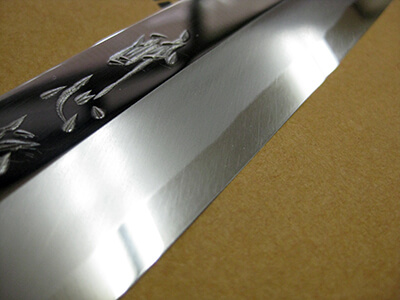
Here’s a 270mm Densho Yanagiba, the real deal. I followed this pattern: diamond whetstone, #400 coarse stone, #1000 medium stone, Suita stone, Arashiyama stone, and finished with a #10000 polishing stone. This pattern seems to yield the most visually pleasing result. Each step’s impact on appearance and sharpness can vary based on how much you refine. The sequence of diamond whetstone, #400 coarse stone, and #1000 medium stone is involved in every sharpening, and it’s where I fine-tune the blade structure. If you notice any irregularities when using the medium stone, I’d recommend going back to the #400 coarse stone to even things out. While it’s okay to push through with the #1000 medium stone, I find that going back is quicker and gentler on the stone’s surface. Once you’ve achieved a consistent edge on the medium stone (getting it to hit as you intended), it’s time for the fun part! Whether you want to achieve a mirror-like finish with your favorite stone or create an elegant misty effect with a natural whetstone, the choice is yours.
Essentially, I’m going to perform the final Itohiki from this point onward. It’s all about deciding which stone to use for the edge and which one for refining the back bevel. I want to ensure that the unique characteristics of the whetstone are precisely transferred to the cutting edge, so I’ll be using the Itohiki technique. For me personally, this is where the real fun begins! It’s about enjoying the process and experimenting with different stones to achieve that perfect edge.
hibishugyo
- 2013-06-13
